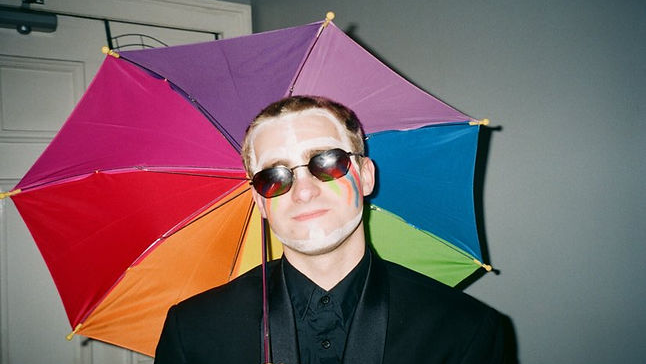By Grace Marshall.
Imagine you are in a silver box surrounded by dancing men and women in dagger collared shirts and PVC trousers.
Imagine flashing lights, streamers and a disco ball – imagine a voice on the loudspeaker giving thanks to Uncles Ralf and Florian and then blasting Numbers. You are in Detroit in 1988.
In fact you don’t have to imagine. You can go onto YouTube (everything I write comes back to videos on YouTube), type in ‘Kraftwerk New Dance Show’ and be transported. I’ve seen Kraftwerk live, but actually that didn’t really come close to watching this 144p video. I saw them a long time ago in the middle of East Anglia with my middle-class dad and surrounded by other middle-class men who looked like my dad. Not surprisingly, ‘80s Detroit seems very different to ‘10s East Anglia. There was widespread unemployment, a crack cocaine epidemic, and a ‘Devil’s Night’ on Halloween of every year. It doesn’t seem to matter too much to the people dancing. As YouTube user Alexlesexe observes, it is rather ‘Rare footage of people having real fun!’
The link between Kraftwerk and west coast techno has been wheeled out before. The stories are fun. There is one about Ralf and Florian going into a club in New York and being confused when ‘Metal on Metal’ started playing only to go on for ages after it should have ended. Ralf asked the DJ what was going on and found out he had two copies of the record which he was mixing together. But I wouldn’t go so far as to say that Kraftwerk invented techno. You can hear the beginnings of four-on-the-floor and synth tech in Timmy Thomas and Lee Perry and Funkadelic – it might be time to reassess these kinds of reductive ‘handing the baton’ narratives you sometimes hear cropping up around techno. Juan Atkins does emphasize the influence Kraftwerk had on him, but he also says that “Kraftwerk got off on the third floor” and the elevator kept going up.
Whether it would have happened without Kraftwerk or not – Detroit techno went way beyond its European influences in the ‘90s. One of the things I really like about this movement is the sense of “scenius” – an ecosystem of Roland T808 and monosyllabic samples. Juan Atkins talks about listening to a Detroit radio show called Electrifying Mojo, which aired at midnight every night, and just before it came you would hear people honking their horns and turning their bedroom lights on and off. The 90s duo Drexciya would also have been listening to Electrifying Mojo as well. They really picked up on the idea of the techno ecosystem. Between 1992 and 2002 they released five records imaging an aquatic fantasy world in the middle of the Pacific Ocean, based on the micro-apocalypse of the Zong Massacre. A slave ship on the middle passage ran low on supplies and white slavers killed over 130 enslaved African people. Drexciya reimagined the atrocity by creating a sound-world in which the slaves who were thrown overboard didn’t die but gave birth to children who could breathe underwater. It’s not really comparable to Kraftwerk at all in my opinion – there’s more to electronic music than the Autobahn.

